#c: sachiko azuma
Explore tagged Tumblr posts
Text

{Me, reading more With the Light, reaching this page}
{Me, Sitting Back}
Bonus: {Cap'd by Me} {Do Not Re post!}
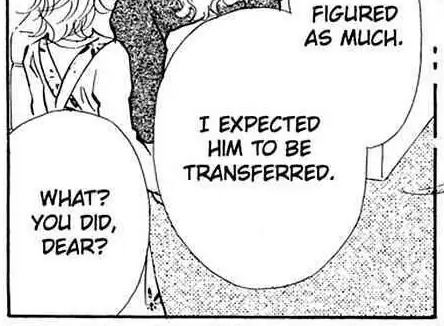
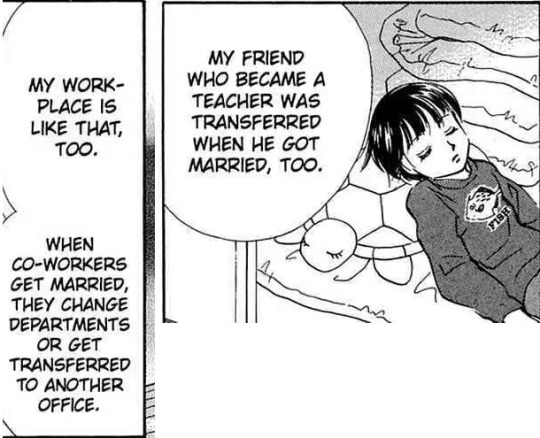
"Koushiro's bio-logical father was a professor at {Uni}, and Koushiro's bio-logical mother was an Assistant {Professor}."
"...{Koushiro's biological father} was a university lecturer and genius mathematician." {Novel}

{Cap'd by Me} {DO NOT RE POST} {DO NOT REPRODUCE MY WORKS UNDER ANY CIRCUMSTANCE}
#koushirouizumi react#koushirouizumi advs#koushirouizumi wtl#koushirouizumi cap#koushirouizumi koushiro#izumi koushirou#izumi family#koushiros biological relatives#koushiros biological parents#koushirous biological parents#homeostasis vs izumis#c: homeostasis#c: koushiros biofather#c: koushiros biomother#c: izumis#wtl spoilers#c: sachiko azuma#azuma sachiko#c: hikaru azuma#azuma hikaru#(The one brought up here isnt technically Assistant but...)#(ME SHAKING FISTS AT '''HOMEOSTASIS''' AKA ***T0EI'S PLANNING*** {THE '''LORE''' IS JUST THE VEHICLE} FROM AFAR)#({+HOW THIS FAN BASE HAS TYPICALLY REACTED TO IT THUS FAR WITHOUT CONSIDERING ANY OF SUCH POSSIBILITIES---})#(Whats Up Im Emotional Over an Unfinished Series)#with the light spoilers#('bUT hOMEOSTASIS had NO POSSIBLE INTERFERENCE PLANNED hOW COULD YOU P O S S I B L Y---')
0 notes
Text
What’s In a Book? Part 29
While going through my collection I managed to find a few books that have yet to be featured on here yet. I decided to go with this one as, upon further review, I noticed that it actually contained a wealth of information that I had previously ignored ^^;
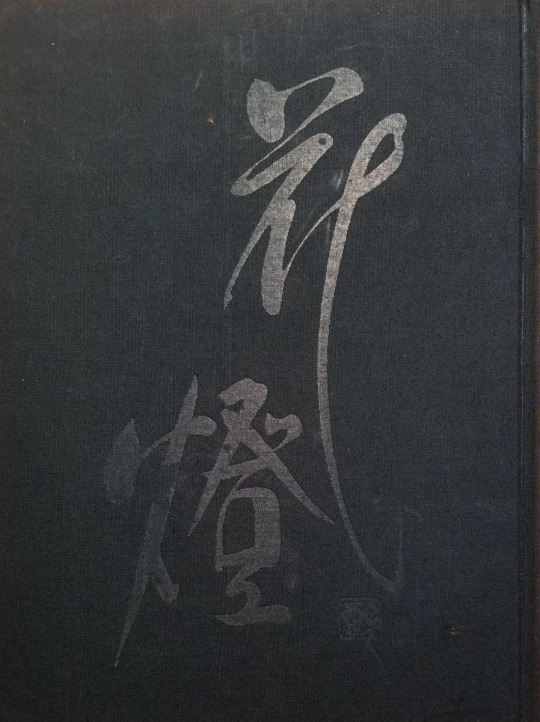
Image of book’s cover courtesy of myself. Hana Akari: Showa Meigiren (はなあかり: 昭和名妓連) - Brilliant Flowers: The Showa Period’s Finest Geisha by Kobunshi Katsura (桂小文枝) (ISBN Unknown). Date of Publication: 1988 Language: Japanese and English (Some Essays and Names Only) Format: Hardcover Availability: Can be found up for auction on a fairly regular basis Price: Anywhere from $30 - $80 Errors: 0 This book is interesting, and that’s putting it mildly. Basically, it provides us with some of the best raw data for its time: The names of the most prominent geisha in each district of each city across all of Japan. It is a literal who’s who guide to the karyukai across the country in the late 1980s and is illuminating both in small essays that can be found at the front and back of the book explaining various schools and styles, but especially because it provides us with images, most in full color, of these amazing women. The book overall is divided into regions which are then broken down further from there. The regions, cities, and districts of each named geisha are: Part 1: Hokkaido (北海道) Set 1: Asahikawa (旭川) - Kofune (小舟) Set 2: Sapporo (札幌) - Onobu (お信), Itoko (い登子), Izumi (いづみ), and Charako (茶良子) Set 3: Otaru (小樽) - Komomo (小桃), Mametarō (豆太郎), Kiku (㐂久), and Gorō (吾朗) Set 4: Muroran (室蘭) - Chonko (﹅子) Set 5: Hakodate (函館) - Nantoki (喃登希) and Kohide (小ひで) Part 2: Tohoku (東北) Set 1: Morioka (盛岡) - Tsutamaru (都多丸) Set 2: Hanamaki (花巻) - Kimiko (君子) and Keiko (桂子) Set 3: Aomori (青森) - Chame (茶目) Set 4: Yamagata (山形) - Kochō (小蝶) and Kinta (金太) Set 5: Akita (秋田) - Chiyogiku (千代菊) Set 6: Obara (小原) - Ikkyū (一休), Aki (秋), and Kogiku (小菊) Set 7: Fukushima (福島) - Sakura (さくら) and Hidemi (秀美) Part 3: Kanto (関東) Set 1: Takasaki (高崎) - Kiyoko (清子) Set 2: Kusatsu (草津) - Sankoma (三駒) and Harumi (春美) Set 3: Sarugakyo (猿ヶ京) - Kikutaro (菊太郎), Koshizu (小静) Set 4: Minakami (水上) - Yutaka (ゆたか) Set 5: Oyama (大山) - Kunika (くに香) Set 6: Tokyo (東京) - Fumie (冨美江) and Wakaryū (若龍) Set 7: Yugawara (湯河原) - Okame (お加目), Matsue (松栄), and Taeko (多恵子) Part 4: Chubu (中部) Set 1: Niigata (新潟) - Chiyogiku (千代菊) Set 2: Takada (高田) - Kazuko (加津子) Set 3: Shibata (新発田) - Renko (れん子) Set 4: Kamidayamadatogura (上山田戸倉) - Senryū (泉竜), Suzuyakko (鈴奴), Saizō (才三), and Utamaru (歌丸) Set 5: Kamisuwa (上諏訪) - Chiyomaru (千代丸) Set 6: Isawa (石和) - Miki (美樹) and Koyakko (小奴) Set 7: Kōfu (甲府) - Misako (美佐子), Kimika (君香), and Hisayo (久代) Set 8: Inuyama (犬山) - Misako (みさ子) Set 9: Hamamatsu (浜松) - Gonza (権三), Ichitarō (市太郎), Otomi (乙美), Koman (小萬), Eiko (栄子), Hatsutarō (初太郎), Tsuruchiyo (鶴千代), Yasuyo (泰世), Sakura (佐久良), Sachiko (幸子), Toshie (利枝), Komomo (小百々), Momoko (百々子), Fumiya (二三弥), Mitsugiku (光菊), Azuma (吾妻), Akiko (明子), and Ichiha (市羽) Set 10: Kanazawa Higashi/East (金沢東) - Koman (小まん) Set 11: Kanazawa Kazuemachi (金沢主計町) - Hitoha (一葉) and Kyōko (京子) Set 12: Kanazawa Nishi/West (金沢西) - Mineko (峯子), Sachiyo (幸代), and Marichiyo (まり千代) Set 13: Fukui (福井) - Makiko (真㐂子) and Yurako (由良子) Set 14: Yuzawa (湯沢) - Katsumaru (勝丸) and Hiromi (弘美) Set 15: Nagoya (名古屋) - Fukuchiyo (福千代), Takako (敬子), Tsuruko (つる子), Mitsuyo (光代), Kiku (喜久), Emiya (英美弥), Sanchō (三長), Satoyo (里代), Mitsu (未津), Ayako (あや子), Kinmaru (金丸), Naoe (直枝), Fukuwaka (福若), Hisae (比三枝), Mako (間子), Yasuko (康子), Toshino (とし乃), Koie (鯉恵), Mariko (まり子), Katsuko (かつ子), Maiko (舞子), Kingyo (金漁), Hideka (秀佳), Chiyoe (千代江), and Motoko (素子) Part 5: Kinki (近畿) Set 1: Osaka (大阪) Part A: Osaka Minami (大阪南) - Yukiharu (雪春), Kikutsuru (菊つる), Kikue (菊恵), Rikimaru (力丸), Kinko (きん子), Yukiji (ゆき路), Kōjirō (廣二郎), Yoshiko (よし子), Terugiku (照菊), Midori (美登利), Hankō (はん幸), Kazumi (かず美), Yukie (ゆき恵), Yūka (勇花), Suzuka (鈴佳), Masako (まさ子), Fukuemi (福笑), Masachiyo (政千代), Kikufumi (菊二三), and Yūko (祐子). Part B: Osaka Horie (大阪堀江) - Temari (てまり) Part C: Osaka Shinmachi (大阪新町) - Hatsuko (はつ子) and Tamao (玉緒) Part D: Osaka Kitashinchi (大阪北新地) - Komaka (駒香), Umesada (梅さだ), Umetomi (梅十三), Suzume (寿々女), and Umemitsu (梅充). Set 2: Kyoto (京都) Part A: Gion Kobu (祇園甲部) - Komame (小まめ), Hisae (久栄), Katsuyū (かつ勇), Haruyū (春勇), Miyokazu (美代一), Fukusono (フク園), Satoharu (里春), Yoshigiku (義㐂久), Kōsono (晃園), Teruha (照葉), Mamekō (まめ晃), Fukuyū (福勇), Kanoko (かの子), Machiko (真知子), Kumiko (玖見子), Kohana (子花), Takayū (孝友), Teruchiyo (照千代), Takeha (竹葉), Nakako (奈加子), Mameyū (まめ勇), Sonoko (その子), Tomichiyo (斗美千代), Yoshimame (芳豆), Kofumi (小富美), Kanoju (かの寿), Mamechiyo (豆千代), Katsufuku (かつ福), Mameji (豆爾), Toyochiyo (豊千代), Katsuji (佳���二), Ichigiku (市季久), Mamezuru (まめ鶴), Koman (小萬), Michiko (道子), Miyokichi (美与吉), Aika (愛香), Teruyo (照代), Fumichiyo (富美千代), Kikuharu (菊春), Masuko (ます子), Momoko (桃子), Kosode (小袖), Chōji (長治), Tomigiku (冨菊), Komasu (小ます), Emiji (恵美二), Dan-e (だん栄), Koyū (小ゆう), Yukiryō (幸良), Hanachiyo (花千代), Miyuki (美ゆき), Masaru (勝), Kanoji (かの次), Hiromi (廣美), Kotomi (小とみ), and Ainosuke (愛之介). Part B: Pontocho (先斗町) - Miyofuku (美代福), Hisakō (久幸), Raiha (来葉), Momiha (もみ葉), Ichiko (市子), Shinatomi (シナ富), Mameharu (豆治), Hisafumi (久富美), Ichisen (市扇), Mameyuki (豆幸), Umeyū (梅佑), Ichitoyo (市豊), Mameshizu (豆志津), Ichisono (市園), Mamechiyo (豆千代), Hisaroku (久ろく), Ichimitsu (市光), Momizuru (もみ鶴), Hide-e (英江), Tomizuru (富鶴), Emiju (笑寿), Fudeya (フデ哉), Miyosaku (ミヨ作), Ichihiro (市宏), and Shinateru (シナ照). Part C: Gion Higashi (祇園東) - Toyoji (豊治), Fumie (章栄), Chika (ちか), Tsurukazu (つる和), Tsunekazu (つね和), Tsunehisa (つね久), Masuko (ます子), Toyohisa (豊寿), and Masako (満佐子). Part D: Miyagawa Cho (宮川町) - Wakaharu (若晴). Kanae (叶恵), Fumichō (富美蝶), Mikiryū (三木竜), Wakachika (若千加), Fukukazu (ふく和), Toshiyū (敏祐), Suzuchiyo (鈴千代), Hinachō (雛蝶), Chikayoshi (千賀俊), Mieko (美恵子), Fukusome (冨久染), Tane-e (種栄), and Tanekazu (たね和). Part E: Kamishichiken (上七軒) - Tei (てい), Emi (恵美), Katsukiyo (勝㐂代), Tamafuku (玉福), Fukuzuru (福鶴), Hisazuru (久鶴), Tsuruzō (鶴三), Hisawaka (久若), Tamaryō (玉龍), Shimeyo (〆代), Katsumaru (勝丸), Naoko (尚子), Kokimi (小㐂美), and Kohan (小はん). Set 3: Nara (奈良) - Suzumi (須寿美) Set 4: Genrō (彦桹) - Kikuyū (菊勇) and Masaya (政弥). Set 5: Otsu (大津) - Omasa (おまさ) Set 6: Kinosaki (城崎) - Tomiyū (富勇) and Kanoko (佳乃子) Set 7: Wakayama (和歌山) - Kikuchiyo (菊千代) Set 8: Shirahama (白浜) - Tsutagiku (蔦菊) Set 9: Osaka Imasato (大阪今里) - Koito (小糸) and Kichihide (吉秀) Set 10: Imasato (今里) - Kichitama (吉玉) Set 11: Kyoto Shimabara (京都島原) - Hana Ōgi Tayū (花扇太夫) Part 6: Chūgoku (中国) and Shikoku (四国) Set 1: Tamatsukuri (玉造) - Naoko (尚子), Yae (八重), and Kishi (貴志). Set 2: Okayama (岡山) - Yakko (奴) and Chizu (知寿) Set 3: Takamatsu (高松) - Hamachiyo (浜千代) Set 4: Matsuyama (松山) - Ippei (一平) Set 5: Tokushima (徳島) - Fukuyo (福代) and Akiyo (明代) Set 6: Kochi (高知) - Kimiryū (君龍) and Sadamaru (貞丸) Part 7: Kyushu (九州) Set 1: Hakata (博多) - Mieko (美恵子) Set 2: Kurume (久留米) - Okiyo (お清) Set 3: Ureshino (嬉野) - Hisamatsu (久松), Komatsu (小松), Koshin (小新), Hisaryū (久竜), and Marikō (まり幸). Set 4: Isao (武雄) - Fumiya (文弥) Set 5: Beppu (別府) - Mitsugiku (光菊), Fujikatsu (ふじ勝), Umesono (梅園), and Tomiko (富子) Set 6: Kumamoto (熊本) - Ayako (あや子) Set 7: Kagoshima (鹿児島) - Aimaru (愛丸) The only areas that I noted are missing are some of the hot springs towns. I’m not too sure why they were skipped over, but it’s possible that the author did not have any connections to them. The most informative part that I admit I skipped initially is the small print under each geisha’s name: their natori specialty, natori teachers, and natori names. This means that we can trace back what schools were the main specialty of each region going back decades. Since this is invaluable for anyone studying geisha over time, I’ll write in what schools were followed, but I will keep names a secret. Districts are as follows: Part 1: Hokkaido (北海道) Set 1 Asahikawa (旭川) - Kineya (杵屋) Set 2: Sapporo (札幌) - Wakayagi (若柳) for dance and Tadeko (蓼胡) for song Set 3: Otaru (小樽) - Fujima (藤間) for dance and Tadeko (蓼胡), Kineya (杵屋), Kiyomoto (清元), Shunnichi (春日), and Tokiwazu (常磐津) for song. Set 4: Muroran (室蘭) - None Given Set 5: Hakodate (函館) - Tanaka (田中) for dance and Matsunaga (松永) for song. Part 2: Tohoku (東北) Set 1: Morioka (盛岡) - Tokiwazu (常磐津) for song. Set 2: Hanamaki (花巻) - Wakayagi (若柳) for dance and Kineya (杵屋) for song. Set 3: Aomori (青森) - None Given. Set 4: Yamagata (山形) - Fujima (藤間) for dance. Set 5: Akita (秋田) - None Given. Set 6: Obara (小原) - None Given Set 7: Fukushima (福島) - None Given. Part 3: Kanto (関東) Set 1: Takasaki (高崎) - Hanayagi (花柳) for dance and Okayasu (岡安) for song. Set 2: Kusatsu (草津) - Hanayagi (花柳) for dance. Set 3: Sarugakyo (猿ヶ京) - Kineya (杵屋) for song. Set 4: Minakami (水上) - Kineya (杵屋) for song. Set 5: Oyama (大山) - Kineya (杵屋) Set 6: Tokyo (東京) - Taguchiko (田口湖) for dance and Kineya (杵屋) for song. Set 7: Yugawara (湯河原) - Tanaka (田中) and Fujima (藤間) for dance and Tokiwazu (常磐津), Kineya (杵屋), and Tadeai (蓼相) for song. Part 4: Chubu (中部) Set 1: Niigata (新潟) - None Given. Set 2: Takada (高田) - None Given. Set 3: Shibata (新発田) - Okayasu (岡安) for song. Set 4: Kamidayamadatogura (上山田戸倉) - Bandō (坂東) for dance and Tōsha (藤舎), Shunnichi (春日), Kineya (杵屋), and Kiyomoto (清元) for song. Set 5: Kamisuwa (上諏訪) - Kineya (杵屋) for song. Set 6: Isawa (石和) - Hanayagi (花柳) for dance and Mochizuki (望月) for song. Set 7: Kōfu (甲府) - Hanayagi (花柳) for dance and Kiyomoto (清元), Okayasu (岡安), and Nagami (長巳) for song. Set 8: Inuyama (犬山) - Nishikawa (西川) for dance and Kineya (杵屋) for song. Set 9: Hamamatsu (浜松) - Fujima (藤間) and Fukuwara (福原) for dance and Kiyomoto (清元), Yoshimura (芳村), Shunnichi (春日), Nishikiharu (錦春), and Tokiwazu (常磐津) for song. Set 10: Kanazawa East (金沢東) - Kamizaki (神崎) for dance. Set 11: Kanazawa Kazuemachi (金沢主計町) - Fujima (藤間) for dance and Kineya (杵屋) and Mochizuki (望月) for song. Set 12: Kanazawa Nishi/West (金沢西) - Nishikawa (西川) for dance and Tōsha (藤舎), Okayasu (岡安), and Kashida (堅田) for song. Set 13: Fukui (福井) - Fujima (藤間) for dance and Utazawa (哥沢) for song. Set 14: Yuzawa (湯沢) - None Given. Set 15: Nagoya (名古屋) - Nishikawa (西川) for dance and Kiyomoto (清元), Tokiwazu (常磐津), Sumida (住田), Kineya (杵屋), Kishizawa (岸沢), Shunnichi (春日), and Fujimatsu (ふじ松) for song. Part 5: Kinki (近畿) Set 1: Osaka (大阪) Part A: Osaka Minami (大阪南) - Onoe (尾上), Fujima (藤間), Bandō (坂東), and Hanayagi (花柳) for dance and Kiyomoto (清元), Kondo (今藤), Mochizuki (望月) and Tokiwazu (常磐津) for song. Part B: Osaka Horie (大阪堀江) - Nishikawa (西川) for dance. Part C: Osaka Shinmachi (大阪新町) - Nishikawa (西川) for dance and Kineya (杵屋), Shunnichi (春日), and Ogie (荻江) for song. Part D: Osaka Kitashinchi (大阪北新地) - Nishikawa (西川) and Hanayagi (花柳) for dance and Kineya (杵屋), Tamura (田村), Uji (宇治), Tokiwazu (常磐津), Tagawa (田川), Kiyomoto (清元), and Yoshimura (吉村) for song. Set 2: Kyoto (京都) Part A: Gion Kobu (祇園甲部) - Inoue (井上) for dance. Part B: Pontocho (先斗町) - Onoe (尾上), Nishikawa (西川), and Wakayagi (若柳) for dance and Tōsha (藤舎), Kondo (今藤), Nakamura (中村), Ogie (荻江), Bungo (豊後), Kineya (杵屋), and Tokiwazu (常磐津) for song. Part C: Gion Higashi (祇園東) - Fujima (藤間) for dance and Tokiwazu (常磐津), Yanagi (柳), Nakamura (中村), Kineya (杵屋), and Tōsha (藤舎) for song. Part D: Miyagawa Cho (宮川町) - Umemoto (楳茂都), Wakayagi (若柳), and Rokugō (六鄕) for dance and Kondo (今藤), Bungo (豊後), Kiyomoto (清元), Yanagi (柳), Yamakishi (山岸), Utazawa (哥沢), Tadeko (蓼胡), and Umeya (梅屋) for song. Part E: Kamishichiken (上七軒) - Hanayagi (花柳) for dance and Tokiwazu (常磐津), Shunnichi (春日), Toyomoto (豊本), Kiyomoto (清元), Tōsha (藤舎), and Kiyoyuki (清之) for song. Set 3: Nara (奈良) - Kineya (杵屋) for song. Set 4: Hikone (彦桹) - None Given. Set 5: Otsu (大津) - Yanagi (柳) for song. Set 6: Kinosaki (城崎) - Wakayagi (若柳) and Onoe (尾上) for dance. Set 7: Wakayama (和歌山) - Onoe (尾上) for dance. Set 8: Shirahama (白浜) - Okayasu (岡安) for song. Set 9: Osaka Imasato (大阪今里) - Kineya (杵屋), Shunnichi (春日), and Kiyomoto (清元) for song. Set 10: Imasato (今里) - None Given. Set 11: Kyoto Shimabara (京都島原) - None Given. Part 6: Chūgoku (中国) and Shikoku (四国) Set 1: Tamatsukuri (玉造) - Fujima (藤間) for dance and Kineya (杵屋) for song. Set 2: Okayama (岡山) - Onishi (小西) for dance. Set 3: Takamatsu (高松) - Kiyomoto (清元) for song. Set 4: Matsuyama (松山) - Kiyomoto (清元) and Tamura (田村) for song. Set 5: Tokushima (徳島) - Yoshitō (芳膛) for dance and Kiyomoto (清元) and Tamura (田村) for song. Set 6: Kochi (高知) - Kiyomoto (清元) and Tamura (田村) for song. Part 7: Kyushu (九州) Set 1: Hakata (博多) - Kondo (今藤), Shunnichi (春日), and Kashida (堅田) for song. Set 2: Kurume (久留米) - Tokiwazu and Shunnichi (春日) for song. Set 3: Ureshino (嬉野) - Hanayagi (花柳) and Fujima (藤間) for dance and Matsunaga (松永) and Tagoto (田毎) for song. Set 4: Isao (武雄) - Fujima (藤間) for dance. Set 5: Beppu (別府) - Tokiwazu (常磐津), Kiyomoto (清元), and Hisago (瓢) for song. Set 6: Kumamoto (熊本) - Hanayagi (花柳) for dance and Kondo (今藤) for song. Set 7: Kagoshima (鹿児島) - Kineya (杵屋) and Tagoto (田毎) for song. The reason why this book has no ISBN is because it was self published. The original cover price was ¥30,000, which is almost $300 USD. This price was likely set due to the vast amount of research done, including acquiring the many photographs, and printing costs. This price was also likely due to it being targeted at serious karyukai connoisseurs as that price in the 1980s would have been much higher now due to inflation. Nowadays you don’t have to pay as much for this book as most Japanese sellers see it as outdated and it can be found quite regularly on Japanese retail sites, such as Yahoo Japan Auctions or Rakuten. The only “errors: that I could find were some spelling issues, but that’s because they’re using the Japanese way of writing Romaji and not the Hepburn System. So, I’m not counting them as errors, but rather just making note of them to anyone who purchases this book. Rating: ✪✪✪✪ (out of 5)
35 notes
·
View notes
Text

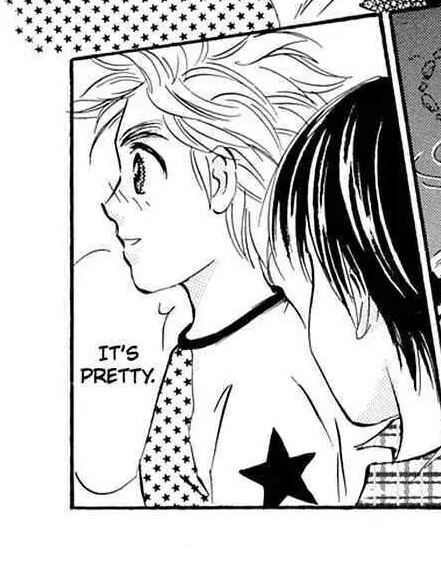
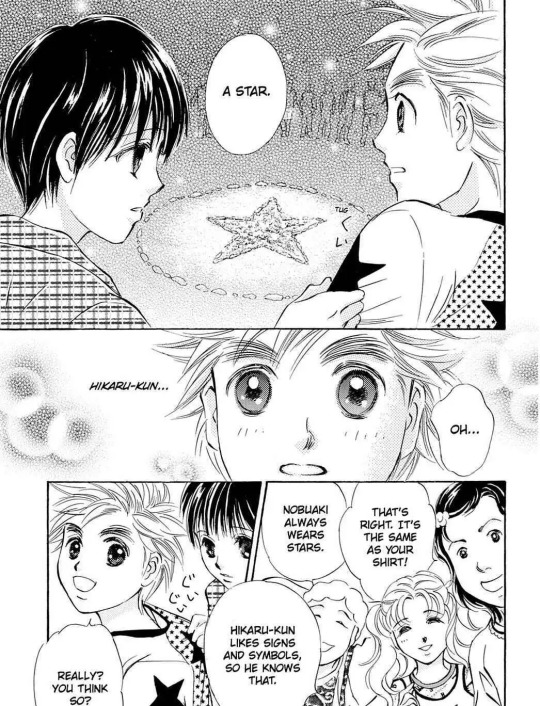
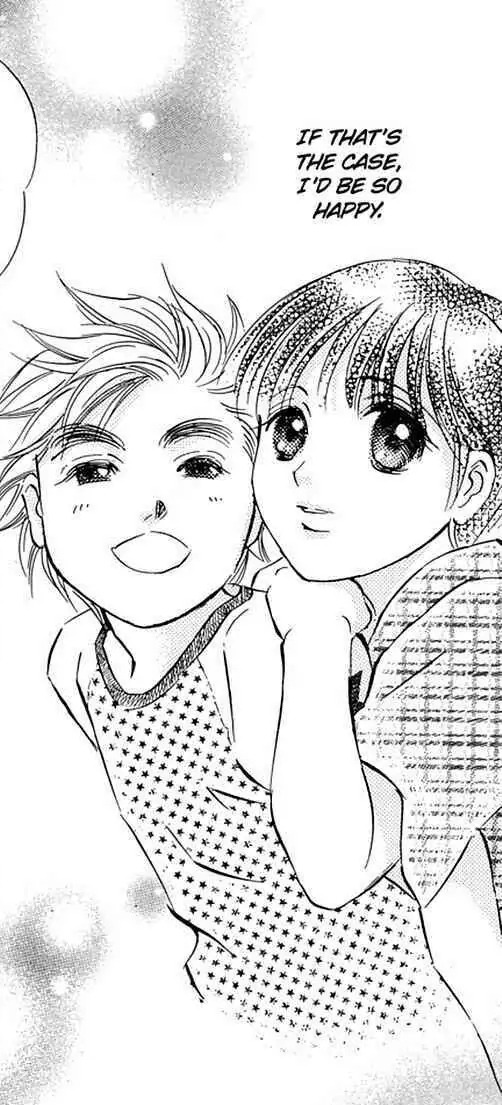
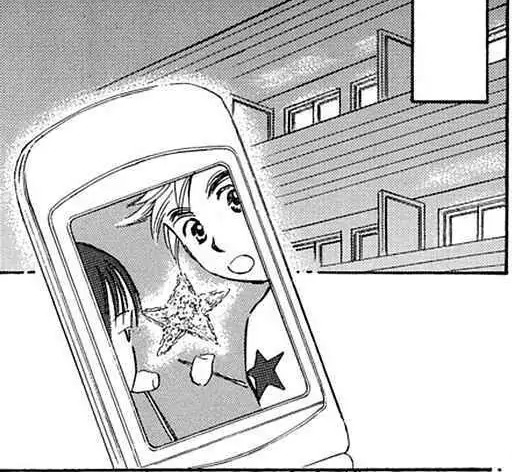
{With the L i g h t} ~ Nobu+Hika + ("Bon-fire") S T A R S + S y m b o l {-ism}
"That's just the leftover firewood shaped like a {s t a r}" - Other kid
"If that's the case, I'd be so {H A P P Y}."
-Sachiko, Hikaru's parent, (Likely also conveying Nobuaki's Feelings)
{Cap'd by Me} {DO NOT RE-POST} (Please ASK to Use)
#nobuhika#azuma hikaru#nobuaki kun#oota san#wtl oota#wtl nobuaki#nakajima moe#azuma sachiko#wtl: cap#koushirouizumi cap#koushirouizumi wtl#chai reads wtl#wtl spoilers#(oK I THINK IM GONNA STOP A BIT FOR NOW OR ILL C R Y)#('WOW EVERYONE DO YOU THINK THE C R E A T O R S OF THESE SERIES KNOW THE S Y M B O L I S M THEYRE USIN IN D E S I G n S' - M E)#({GIVING THE LONGEST OF LONG S T A R E IN T A I C H I s GENERAL D I R E C T I O N})#({I will probs compile better cap sets later})
1 note
·
View note
Text


{With the L i g h t} + A S T H M A + E C Z E M A + P E R I O Ds
{Cap'd by Me} (Please ASK to Use)
#koushirouizumi cap#koushirouizumi wtl#wtl: cap#c: sachiko#c: masato azuma#sachiko and masato#chai reads wtl#azuma masato#azuma sachiko#wtl spoilers#(mE ' OHWOW THEY USED {A} N A M E ')#({Theyre discussing a f i e l d t r i p!})#(E D I T : ' WHOA THEY ACTUALLY MENTION P E R I O D s IN THIS EARLY 2000's SERIES ')
0 notes
Text
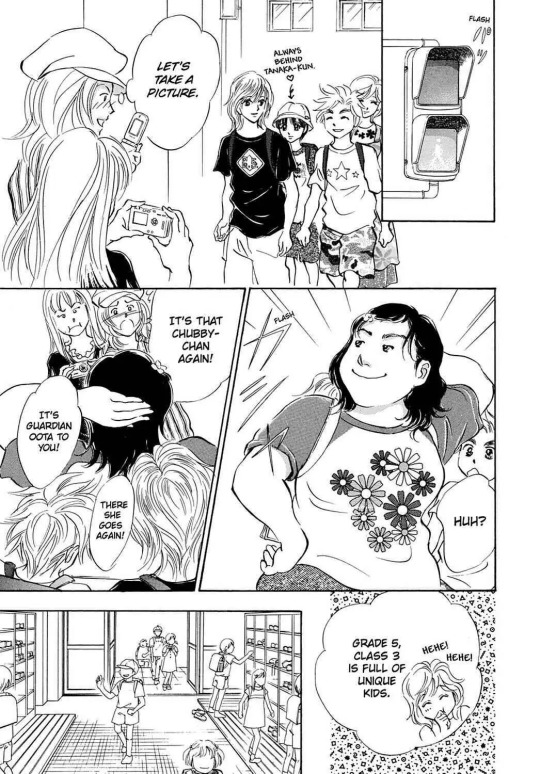
{With the L i g h t} ~ Oota Appears
"It's GUARDIAN OOTA to YOU!!"
{Cap'd by Me} (Please ASK to Use)
#guardian oota#wtl: cap#wtl oota#nobuaki and oota#azuma sachiko#tanaka and oota#c: oota#c: nobuaki#c: sachiko#wtl spoilers#chai reads wtl#(HI I LOVE ALREADY)#(IM HIKARU AND OOTA SIMULTANEOUSLY)#({AVOIDING THE F L A S H-Y L I G H T S S E N S O R Y WHILE P R O T E C Ts MY AUT!M U T U A L S FROM S A M E})#({WHY COULDNT THIS SERIES FINISH ACTUALLY WHY COULDNT IT HAVE A N I M E})#({Oota is still Newer to me bc Im Still Readin' but CAP'D}#({Im not sure Oota is actually aware of Hikaru being A u t i s t i c yet but will almost def know Soonish})#({originally Oota is protecting Tanaka from the ... p..rivacy invasion})
0 notes
Text
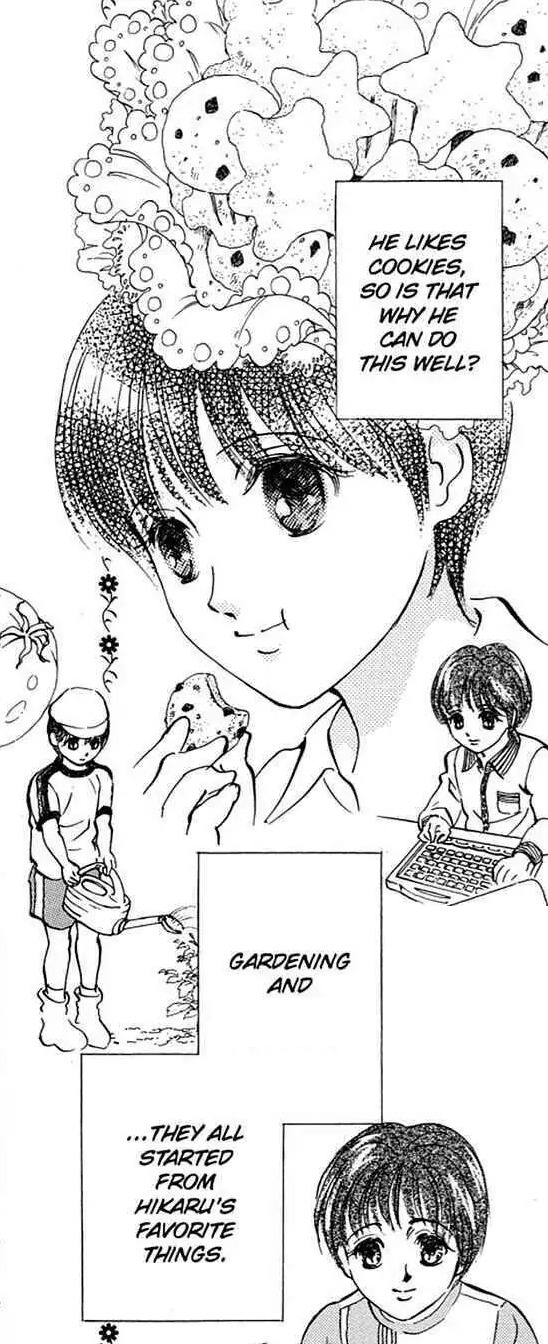
{With the L i g h t} (E d i t) ~ S p e c i a l I n t e r e s t s + H I K A R U Azuma
{Cap'd by Me} {Do Not Re-post} (Please ASK to U s e)
#koushiro relevant#koushirouizumi wtl#koushirouizumi cap#koushirouizumi wtl cap#koushirouizumi wtl hikaru#azuma hikaru#wtl spoilers#chai reads wtl#(O k so this arc is Bit Hard to Read Too)#(Coming Back To LATER)#(Since this is Super early 2 0 0 0 s m a n g a)#(Yeah theres a bit of T r a i n A u t i s t i cs going on here)#(The other instance is more something Sachiko suggests Hikaru to do because Hikaru {s t i m s} with it???)#(but the others)#(the mini arc before relates the {G a r d e n i n g} yeah)#(this arc brought back {if simple} {C o o k i n g})#(But its still more varied examples than I often see with A LOT of Aut!charas like at least its not ONLY {T r a i n s})#({Using spaces to keep out of S e a r c h for now})#koushirouizumi no rb#(This is also what Ive been hinting in relation to 'Koushiro likely learns {c o o k i n g} bit better later too')#(We DO SEE in Tri spreads DID TRY TO CANON {C O O K} MIMI CHOCO JUST... Was Maybe Little Too Enthusiastic About Getting It 'P e r f e c t')#({Later I will add full cap+probably make some comparison sets Im just using this one to emphasize Sp Ins Besides 'Just' T r a i n s rep})
0 notes